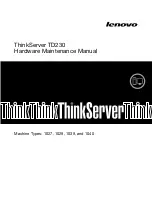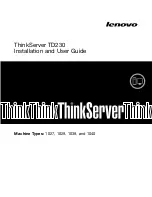
SuperWorkstation 5049A-TR User's Manual
182
D.3 Recovering the BIOS Block with a USB Device
This feature allows the user to recover the main BIOS image using a USB-attached device
without additional utilities used. A USB flash device such as a USB Flash Drive, or a USB
CD/DVD ROM/RW device can be used for this purpose. However, a USB Hard Disk drive
cannot be used for BIOS recovery at this time.
The file system supported by the recovery block is FAT (including FAT12, FAT16, and FAT32),
which is installed on a bootable or non-bootable USB-attached device. However, the BIOS
might need several minutes to locate the SUPER.ROM file if the media size becomes too
large due to the huge volumes of folders and files stored in the device.
To perform UEFI BIOS recovery using a USB-attached device, follow the instructions below:
1.
Using a different machine, copy the "Super.ROM" binary image file into the disc Root "\"
directory of a USB device or a writable CD/DVD.
Note 1:
If you cannot locate the "Super.ROM" file in your driver disk, visit our website
at
to download the BIOS package. Extract the BIOS binary im-
age into a USB flash device and rename it "Super.ROM" for the BIOS recovery use.
Note 2:
Before recovering the main BIOS image, confirm that the "Super.ROM" bi
-
nary image file you download is the same version or a close version meant for your
motherboard.
2. Insert the USB device that contains the new BIOS image ("Super.ROM") into your USB
port and reset the system until the following screen appears:








































